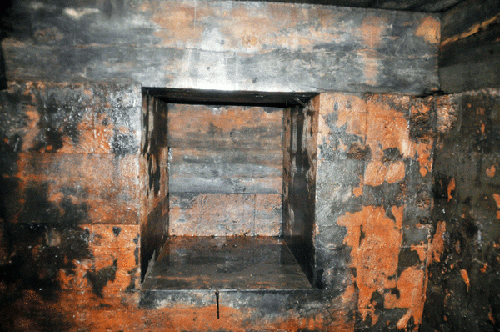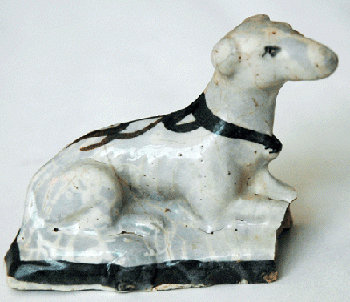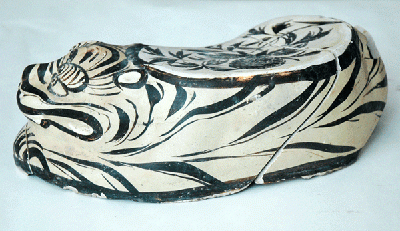Excavation of large Tomb of Han Dynasty in Dingtao county, Shandong
Chinese Archaeology
Source - http://www.kaogu.cn/en/detail.asp?ProductID=3163
Dingtao large tomb from Han dynasty is located 2000 meter northwest of Dalijia village, in Maji town, Dingtao county, Shangdong province. In the early years, ceramic sherds dated to the periods from Shang-Zhou to Han Dynasties were collected from this site, which was orginally a part of the Lingsheng Lake Site.
In 50s of the last century, this site consisted of three earth mounds, “Gudui”, a name given by the local people. Since October, 2011, a series of salvaging excavations have been conducted by Shandong provincial institute of cultural relic and archaeology on this site. The tomb that was cleared up for this time occupied the biggest earth mound.

Prior to the excavation, a large-scale archaeological exploring of the tomb and its adjacent area was conducted, indicating the scale of the mortuary mound. So far there have no evidence of mortuary garden or accompanying burial pits.
Many remains from Tang-Song Periods were discovered within the large mound, including refuge pit, trench, bronze coins deposit and etc. Accompanying these remains were objects of porcelain in a diversity of forms, such as bowl, dish, flask, dog, and tiger pillow. Other objects included bronze coins, mirrors, iron kettles and knives. The chronology of the excavated objects mostly appears to have been from Song-Yuan Periods.
The tomb was preserved with gradual adduction on top in the form of three-layer platform. The mound, more than 90 meters in diameter, was rammed. The earth-rammed layers were clear but uneven each layer 10-20 cm deep, approximately. Basically, they sloped outwards from the central. Rammed pit, rounded with its base flat, 5-8 cm in diameter, provides the clue of the use of metal tools for ramming. Other methods of the ramming may include the use of bundling sticks together.

Shape of the entire tomb structure is similar to a word, “甲” with the tomb doorway sloping and stretching to the east. Outline of the tomb is about square, with each side 28.3 meter. The wooden coffin beneath the blue-green bricks was sealed with sands, and then plastered within the mortuary mound.
A series of post-holes were distributed neatly around the tomb with each side 7 pieces. The distance from each hole, 0.4 meter in diameter and 2 meter deep, to the tomb pit measured ca. 3.3 meter. Also on top of the sealing sands were discovered a number of post-pits. Unfortunately, because of robbing disturbance, there is no apparent rule of their distribution.
The tomb structure was shown to be above-ground, with its entry raising 5.5 meter higher than the ground. The burial structure was built of rammed earth with the support of wooden plank. The discovery of post-holes, wooden sticks inside the sand groove and post-pits on top of the coffin indicates the connection with the construction of the coffin chambers.

The coffin chamber is shown to be square, 22.64 meter long and 22.48 wide. Its top was covered by two-layer bricks and surrounding area was sealed with one-layer bricks, in total of 13000 pieces. The size of bricks is identical, rectangular. Inscribed words were discovered by archaeologists on most of the bricks, including four categories, i.e. written with red and black color, inscribed, and stamped, otherwise, inscribed symbols. The words found on the burial bricks have been identified to be people names. Other than those, a little amount of place name like ShanyangChangyi, and Xili, and numbers were also found. So far there have been up to more than 30 kinds of family names. The top of the wooden coffin chamber was built of four-layer square timber, beneath which lay the covering slabs.
This three-chamber large tomb is characteristic of the building of frame arch of cypress. Its entry oriented the east. Both right and left sides in each chamber have side chambers. Out of the main structure lay surrounding corridors, out of which an outer coffin was installed. On both the northern and southern side of the outer coffin were accompanied four rectangular chambers, respectively. Both sides on the east and west had two rectangular chambers. Therefore, the plan of both sides of outer coffin is completely symmetrical. All of the burial chambers were sealed with wooden doors. The entire burial structure was particularly built and its preservation was impressive, even though surface and tops of burial chamber walls were slightly decayed. In the middle was located the main chamber with a lacquer coffin. There were lacquer drawings and paintings on its exterior surface.
The fact of burial structure could provide the evidence of its date, ca. late period of Western-han. The monumental architecture of the burial indicates its impressive size, highest status of the buried persons and best preservation of such kind of construction. Its design and structure is representative of the certain period, when the burial structure of cypress outer-coffin with timber headed-in was well developed and significant.
The evidence of geographic settings of the large tomb and its associated literature may indicate that the person buried in this tomb could have been Liukang, the king of Dingtao. (Translator: Sang Li)